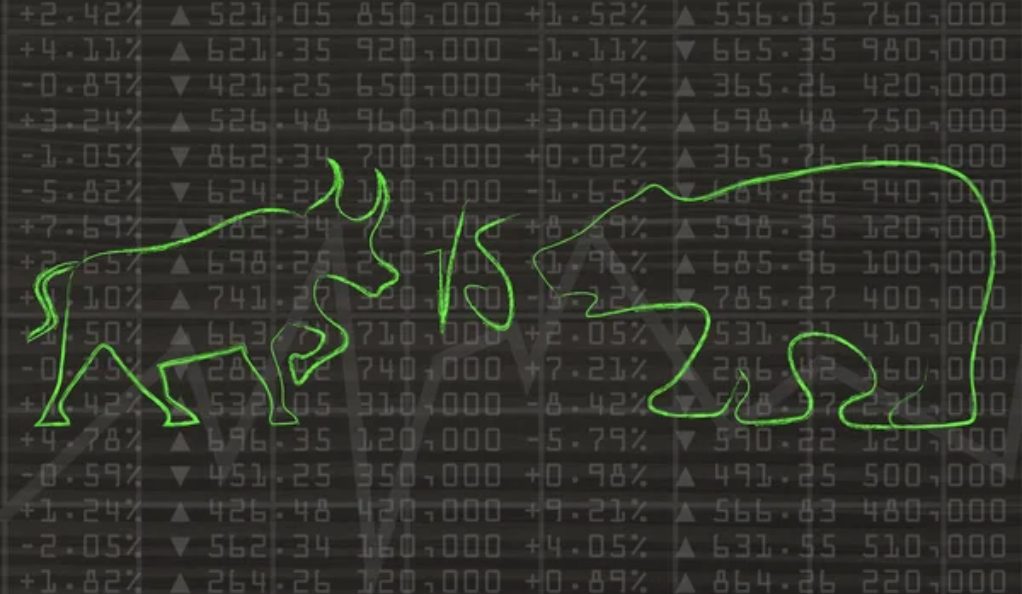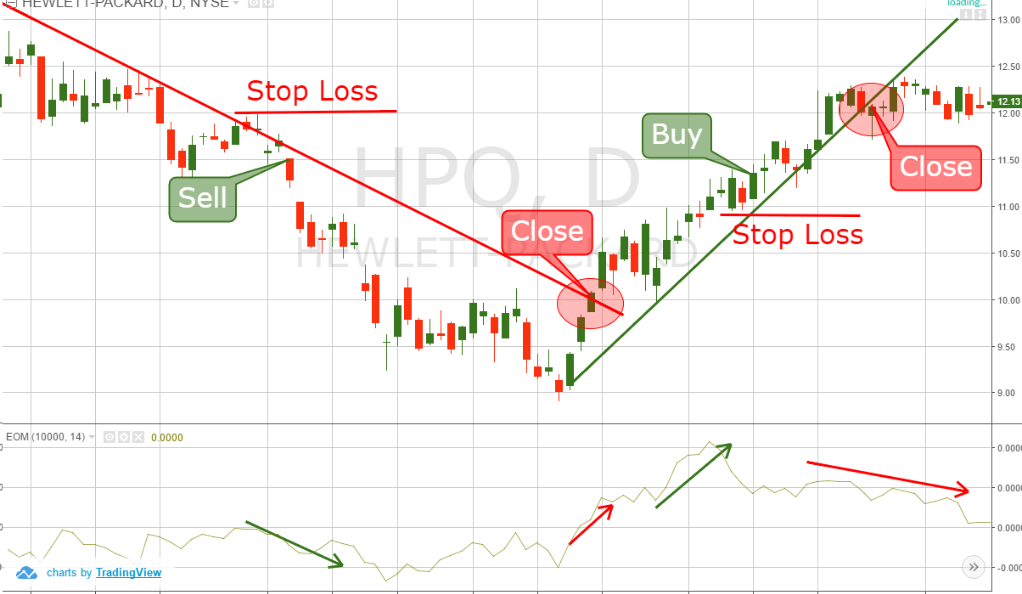At the beginning of 2022, the term bear market was all over the news, as mass layoffs, interest rate hikes, and rising health concerns affected the world economy. Investors often use “bulls” and “bears” to illustrate how the financial market moves. Understanding these markets is crucial for those looking to build a robust trading portfolio and develop their investment skills.
Bear markets form in an economic downturn. As a result, asset prices are falling. Therefore, investors are pessimistic about the short-term recovery of the markets. Bull markets, on the other hand, indicate that the economic situation is stable; markets are flourishing, and stock prices are rising.
Bull and bear markets have shaped the modern investment world with their impact and historical significance. Many traders develop strategies and study the trades closely to make informed decisions based on these market phenomena. With this article, you will learn to differentiate the two market types and incorporate valuable strategies for your investment goals.

The Bull Market Phenomenon
During extended periods of economic growth, investors can observe the formation of a bull market. Rising stock prices characterize this optimistic phenomenon. Financial markets are highly affected by the behaviour of traders, and during a bull run, investor sentiment is upbeat. As a result, the volume of trading activities rises, which drives the stock prices in an upward direction.
A bull market becomes the most prominent during stable economic periods. Investors form long-term “bullish” predictions, meaning they believe that company shares will continue to bring profits to investment portfolios for an extended period.

The formation of bull markets depends on the presence of several factors:
- Stable employment rate, GDP growth, and a positive consumer price index (CPI) are strong economic indicators that highly impact the price action of stocks.
- Companies share quarterly earnings reports that cause significant fluctuations in share prices; thus, corporate earnings growth fuels bull markets.
- Favourable monetary policies are another contributing factor that allows companies to expand their business efforts by calculating risks and operational costs according to interest rates and inflation predictions.
- Lastly, technological advancements, including the AI race in 2023, give room for enhanced productivity and innovative ideas. This initiative supports businesses in optimising their processes and bringing exciting products to the market.
To put things into perspective, investors can learn about the bull market phenomena through historical examples. The most famous bull markets include The Roaring Twenties, the Dot-com Bubble, and the Post-Financial Crisis Recovery.
The Bear Market Landscape
In contrast to bull markets, the environment that bear markets build is more hostile and unfavorable for investors, companies, and the economy as a whole. When the market enters a “bearish run,” financial experts announce that prolonged downturns have affected the economic landscape. Stock prices fall due to lower corporate profits, as investors remain pessimistic during the volatile and uncertain era of bear markets.

Here are the main factors which contribute to the formation of bear markets:
- Unemployment during harsh economic times increases in unison with prices and interest rates, leading to decreased trading activity. As the demand for stocks decreases, the supply grows, meaning more shares are available to trade for a lower price.
- Entering an economic recession and depression indicates that a bear market is present. As supply chain issues, consumer spending, and other external factors indirectly affect the stock market, a global financial crisis may send shares into a bullish downtrend.
- A burst of asset bubbles is observed when previously inflated prices, suddenly drop in value, which was the case with the financial market at the beginning of 2022. Consequently, investors lose substantial resources as the market crashes into a bear market.
- Geopolitical uncertainties strongly impact the world economy and financial market, as unexpected regulations and changes in international trade and technology roll out daily. This unfortunate occurrence leads to higher investment risks and speculations, resulting in capital loss.
Memorable bear markets examples like The Great Depression, the 2008 Financial Crisis, and the COVID-19 Pandemic Fallout have taught investors valuable lessons. The duration of such periods, as well as their occurrence, is hard to predict, but creating solid financial plans for the future serves as the best strategy for adequate preparation.
Key Differences Between Bull and Bear Markets
When comparing bull and bear markets, the most evident difference is that during bull markets, stock prices rise, while in bear markets, they decline. However, to gain more valuable insights, investors need to consider other key metrics that create the distinction between the two market types:

- In financial markets, the primary metric used to indicate the current state of the market is stock market indexes. The three most popular U.S. index funds are the Standard & Poor’s 500 (SPX), the Dow Jones Industrial Average (DJIA), and the Nasdaq Composite Index (NDAQ). These indexes measure the current performance of the stock market.
- When differentiating bulls and bears using indexes, empirical data shows that index prices should rise by 20% or more from the last lowest close price for a market to be considered a bull. Bear markets, on the other hand, form when prices drop by 20% or more compared to the previous peak price.
- As the landscape of the markets changes during bull and bear runs, so do the market psychology and investor sentiment. With higher ROI potential, company profitability, and rising stock prices, investors’ behavior tends to be optimistic, and many traders adopt a buy-and-hold portfolio strategy. Risk appetite increases, and people are ready to invest in assets with the potential for high returns.
- On the contrary, during bear markets, the possibility of ending up at a loss is higher, as stock prices are volatile and unpredictable. Therefore, investors try to sell their assets by diversifying their portfolio with less risky investments like defensive stocks or holding cash.
Bull and bear markets have a significant impact on investment strategies, both in terms of asset allocation and portfolio diversification. By adapting to the current market conditions, traders have greater control over their risks and optimize their investment opportunities.
Recognizing Market Transitions
Even expert investors are unanimous that predicting the market has proven to be an impossible task. However, recognizing market transitions, using market indicators, and performing sentiment analysis is a strategy that can benefit risk management and help you pinpoint opportunities.

- When determining whether the market is bullish or bearish, market breadth will give you objective results based on the price movement of stocks from a more prominent trend perspective.
- Another helpful tool is the Volatility Index, which takes the options prices of the S&P 500 and creates a volatility prediction for the future.
- Advanced traders may also consider analyzing moving averages and technical analysis instruments to identify trends, support and resistance levels, and price fluctuations.
- Sentiment analysis is another technique that plays a crucial role in recognizing market transitions, as it gives insight into the minds of market participants. Financial decisions are often driven by emotion, including fear and excitement. Therefore, financial analysts carry out investor surveys, which track investors’ goals, risk appetite, and future market outlooks.
Individual investors that want to quickly spot the transition between a bear and a bull market and vice versa can follow the latest press releases and media coverage. Social media trends are other indicators that can generate ideas and help prepare for an upcoming reversal.
Strategies for Bull and Bear Markets
The most knowledgeable investors understand that markets move in cycles, and there are specific investment strategies that suit the different market cycles. Adapting to the market’s cyclical nature is an essential ability to make the most out of bull and bear runs. Here are some of the most popular strategies you can implement.
Bull Market Strategies

For bull markets, a buy-and-hold method is a practical approach, which is considered the best long-term strategy. Another more riskier bull strategy is momentum investing, which takes advantage of stocks performing well and gets rid of underperforming assets.
Furthermore, investing in growth stocks is one of the most popular techniques during bull runs. As companies and their revenue thrive due to favorable economic conditions, the opportunity to land investments with higher than usual ROI significantly increases.
Bear Market Strategies
While traders tend to take long positions during bull markets, the opposite behavior is observed during bear markets. Investor sentiment is driven by fear, and safer approaches like defensive investing mitigate the levels of risk and prevent capital loss due to high volatility. Investors also use different techniques for portfolio diversification, as putting all eggs in one basket during bear runs increases the chances of losing all investments.
Although it is the trend, always going short during bear markets is unnecessary. During such periods, stock prices drop; thus, value investing in undervalued assets could bring higher than usual returns during upcoming favorable market cycles.
Impacts of Bull and Bear Markets on Different Asset Classes
The reach of financial markets is so broad that it could drastically impact asset classes. Every asset type gets influenced by bull and bear markets differently. Let’s examine the most notable changes for each group of assets:

Stocks and Equities
Firstly, it’s only appropriate to begin with stocks and equities, which are the most popular and straightforward types of investment. Blue-chip stocks are shares of well-established companies like Apple and Amazon, which have a strong reputation and a large market cap.
Blue-chip stocks perform well during bull runs, bringing even more value to investors. However, they are not immune to bear markets, and although most remain stable and lose the least amount of value, the severity of the bear may cause unexpected losses.
Small-Cap Stocks
Small-Cap Stocks are the shares of companies with a market cap between $300 million and $2 billion. Smaller companies can explode during bull runs but are generally more volatile and shaky during bear markets.
Bonds and Fixed-Income Securities
Bonds and Fixed-Income Securities, including government bonds and corporate bonds, are less riskier investments and provide less growth compared to stocks. Traders prefer to shift their capital into such safer types of assets during bear markets in order to fight the high volatility. Although fixed-income securities are not trending during bull runs due to potentially more profitable investments, they are still a less risky strategy to consider.
Commodities
Lastly, consider the impact of shifts in financial markets on commodities like precious metals and alternative investments like real estate. Recessions, economic growth, and many other external factors strongly impact these classes, and their diverse range makes it hard to predict their overall performance. That is why consulting a specialist and conducting thorough research is vital for commodities and alternative assets.
Summary and Conclusion
In summary, bear and bull markets shape the financial markets in ways that alter the investment world and investor sentiment. Bear and bull runs are cyclical, so investor strategies often adapt in unison with the various market cycles. Different asset classes experience numerous changes, so it is good to consider your goals and make informed decisions based on price fluctuations.
Understanding bull and bear markets, their fundamental differences, and how to utilize their benefits will help you become a seasoned trader and build a strong portfolio. Recognizing market transitions is a worthwhile skill to develop, as it will help you spot trading opportunities and mitigate risk. Learn through historical events, analyze markets and external conditions, and soon, you can become a capable investor who rocks bull and bear markets with ease!
FAQ
What is the difference between bull and bear markets?
Bull markets are prominent during economic growth and are characterized by growing asset prices and positive investor sentiment. On the contrary, bear markets occur during economic uncertainty or recession, stock prices fall, and investors make trading decisions driven by fear.
How can I identify if the market is bullish or bearish?
In theory, bear markets occur when index prices rise by 20% or more from the last lowest close price, and the opposite is the case for bear markets. Practical strategies like market breadth, the volatility index, and analysing moving averages can help you recognize market transitions.
How can bull and bear markets affect my investments and portfolio?
As volatility in the stock market is high, bull and bear markets may cause significant price fluctuation and increase volatility. Therefore, consider changing your investment strategy and diversifying your portfolio to adapt to the different markets.
What are the best strategies during bull and bear markets?
There are numerous different strategies that investors use. The most common approaches for bear markets include buy-and-hold, momentum investing, and growth stocks investing. Investors pick less risky strategies during bear markets, including defensive investing, portfolio diversification, and value investing.
WeInvests is a financial portal-based research agency. We do our utmost best to offer reliable and unbiased information about crypto, finance, trading and stocks. However, we do not offer financial advice and users should always carry out their own research.
Read More







